Last updated: April 11, 2025
Article
Southern Campaign of the American Revolution Junior Ranger Program
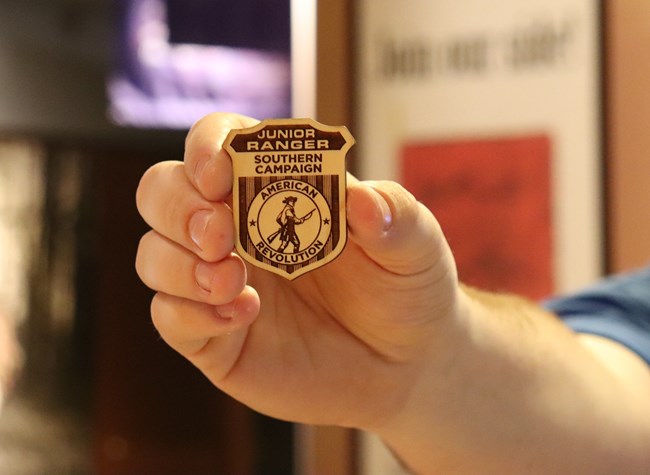
Welcome Junior Rangers!
The Southern Campaign of the American Revolution Junior Ranger Program features five units of the National Park Service! Visit or contact one of the five parks to get a Junior Ranger book or you may print the activity book below. When you complete a booklet, visit or mail the completed book to a participating park to get sworn in as a Junior Ranger!Learn more about units related to the American Revolution.
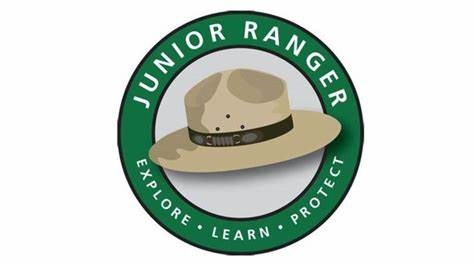
Southern Campaign of the American Revolution Junior Ranger Book
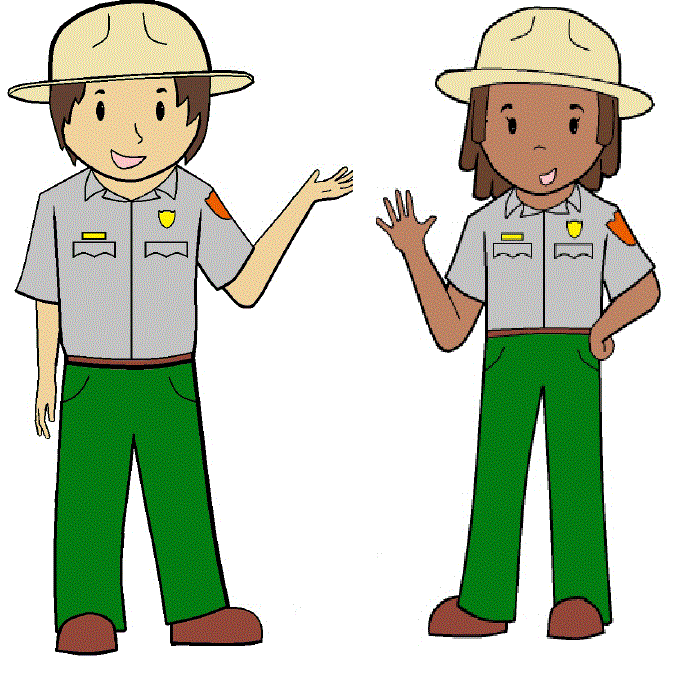
Welcome!
Welcome to the junior ranger program for the Southern Campaign (1778-81)! This is Ranger Danny and Ranger Sydney! They will be your guides through this program. They are delighted that you are working on this program! There are several National Park Service sites dedicated to the Southern Campaign of the American Revolution, and this booklet will help you explore some of them!- Cowpens National Battlefield
- Kings Mountain National Military Park
- Overmountain Victory National Historic Trail
- Ninety Six National Historic Site
- Guilford Courthouse National Military Park
activities, email one of the sites above, and we will mail you a Southern Campaign Junior Ranger badge!
Ages 4-6: Complete Three (3) activities to become a Junior Ranger
Ages 7-10: Complete Four (4) activities to become a Junior Ranger
Ages 10+: Complete Six (6) activities to become a Junior Ranger
Track your progress below by checking off the box next to each item when completed:
| ____ | Southern Campaign Summary |
| ____ | Word Search |
| ____ | Maze |
| ____ | Overmountain Victory National Historic Trail |
| ____ | Kings Mountain National Military Park |
| ____ | Cowpens National Battlefield |
| ____ | Guilford Courthouse National Military Park |
| ____ | Ninety Six National Historic Site |
| ____ | Word Scramble |
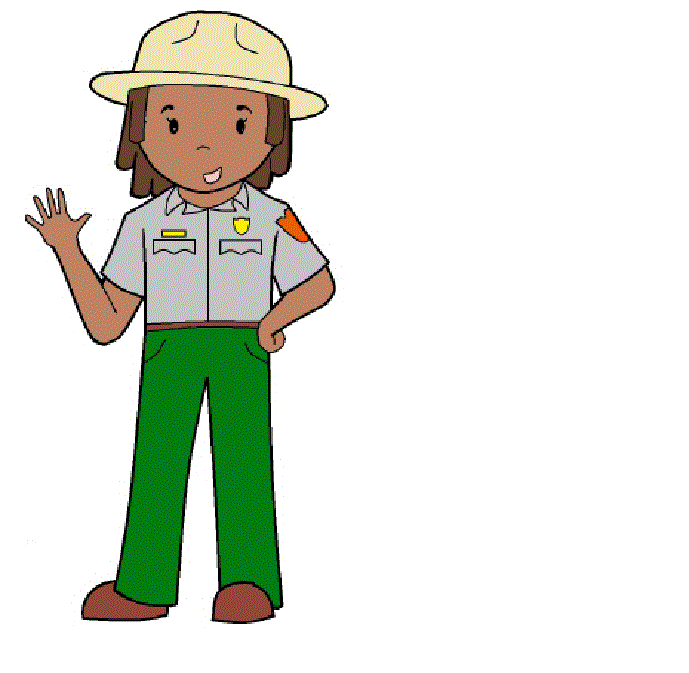
Important Words and Terms!
There are lots of things to see and do around National Park Service sites and lots of things to remember. Here are some important words that will help you complete your Junior Ranger program! The words will be underlined in the booklet.National Park Service: The National Park Service protects the history and nature of national parks for everyone’s enjoyment.
Southern Campaign (1778-1781): Theater of American Revolutionary War that occurred in the second-half of the war in the southern colonies.
Southern Strategy: British plan to win the American Revolution by attempting to take control of the southern colonies of Georgia, North Carolina, and South Carolina.
Militia: Civilians who volunteered or were drafted to serve in the military.
Scrimshaw: Artwork done by drawing or engraving tusks, whale’s teeth, bone, or ivory objects.
Pasture: Land with grass that is suitable for grazing animals.
Tactic: An action to achieve a specific goal.
Double Envelopment: When a military force attacks both sides of an enemy at the same time.
Allegorical: An image or text that is designed to have a hidden or additional layer of meaning.
Monument: A statue or structure used to commemorate a person or event.
Siege: Military operation when forces cut-off supplies and resources to a town or structure.
Earthworks: Large man-made bank of soil sometimes used for fortification.

Southern Campaign Summary!
Read below for a brief summary of the Southern Campaign! Each park tells its own piece of the overall Southern Campaign story, where the military events that took place in the Carolinas influenced the eventual American victory in the Revolution.In 1778, British forces made the Southern Strategy as a way to take control of the southern colonies of Georgia, North Carolina, and South Carolina. The British made this strategy after not being able to defeat the Continental Army in the north. Also, France and Spain entered the war and threatened British assets around the world. The British wanted control of the lucrative southern colonies and important cash crops. The Southern Strategy was a potential way for the British to win the war.
The patriots failed to stop the British several times in the south. The British captured Savannah, Georgia in 1778. In 1780, Charleston, South Carolina was also captured by the British. Most notably, the patriots lost in South Carolina at the Battle of the Waxhaws, and at the Battle of Camden. Even so, the course of the war started to change with patriot victories. Patriots won at the Battle of Kings Mountain, Battle of Cowpens, and fought
hard in the stand-off at Guilford Courthouse. The patriot siege of Ninety Six put more pressure on the British to retreat back to the coast. The British failure to achieve naval superiority led to Earl Cornwallis’ entrapment and patriot victory at Yorktown, Virginia in 1781. Britain’s Southern Strategy was defeated, their hope of winning the war was lost, and it all began with these southern battlefields.
Southern Campaign Summary!
This Junior Ranger program covers some of the history of the Southern Campaign. In addition to national parks, there are several state sites and other places to visit! To see some of the many battles and engagements, check out the map below!
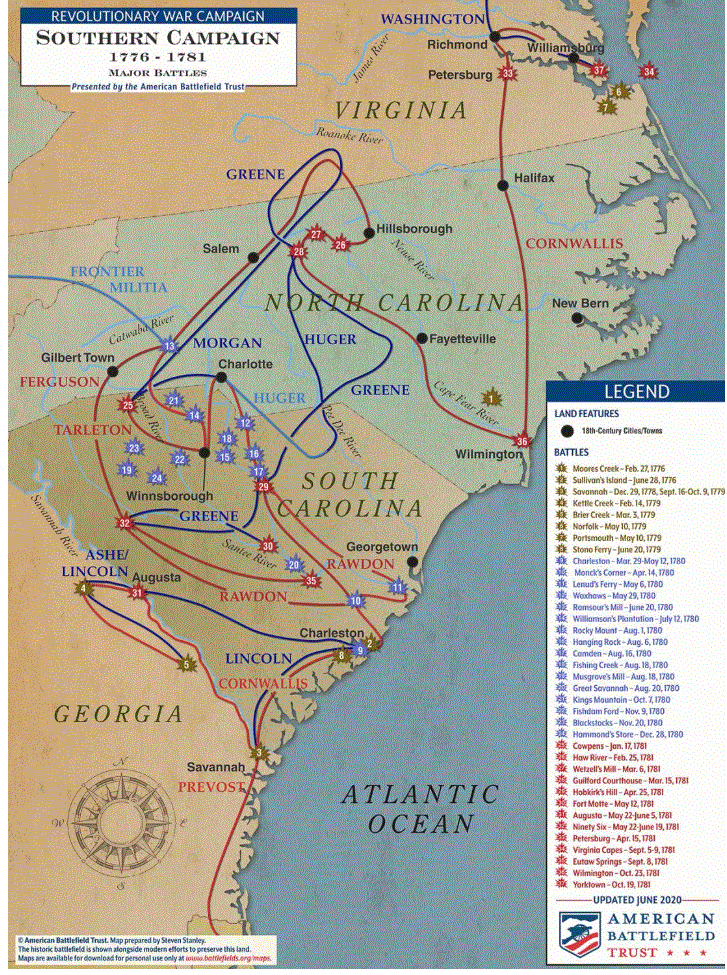
American Battlefield Trust
Southern Campaign Maze!
To get through the maze, follow the path the American Army took from 1780-1781.FIRST: The patriot militia, the Overmountain men, chased British major Patrick Ferguson 330 miles through the Appalachian Mountains.
SECOND: The patriots won their first major victory since the British invasion of Charleston, at the Battle of Kings Mountain, October 7, 1780.
THIRD: Major General Nathanael Greene arrived in Charlotte and took over the American army in the South, splitting his army in half, December 3, 1780.
FOURTH: Brigadier General Daniel Morgan took half of the American army into South Carolina and defeated Lt. Colonel Banastre Tarleton's British Legion at the Battle of Cowpens, January 17, 1781.
FIFTH: Morgan's army met back up with Greene's army and Greene raced north, confronting Major General Charles, Earl Cornwallis at the Battle of Guilford Courthouse, March 15, 1781 .
SIXTH: Greene's army returned to South Carolina and laid siege against loyalists at Ninety Six, May-June 1781.
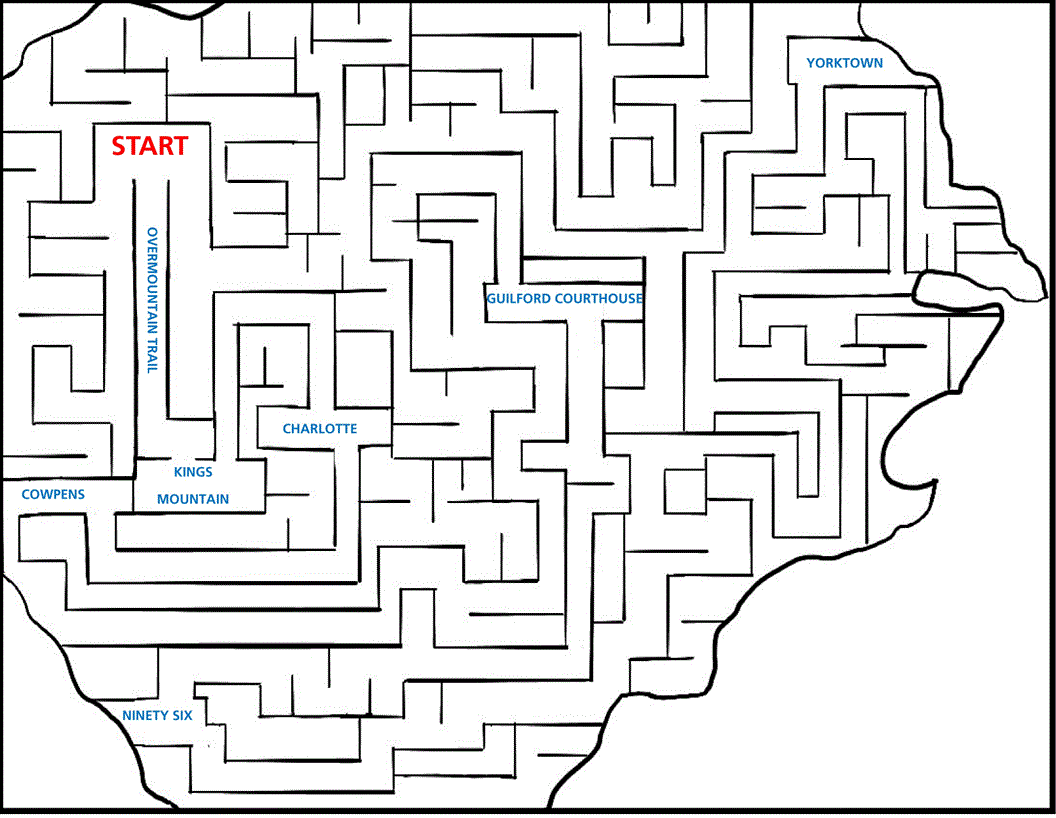

Southern Campaign Word Search!
Help Ranger Danny find these words!
Musket Horses Trail
Powder Mountain Medal
Wagon Revolution Battlefield
Colonial Cows National Park
Flag Siege Monument
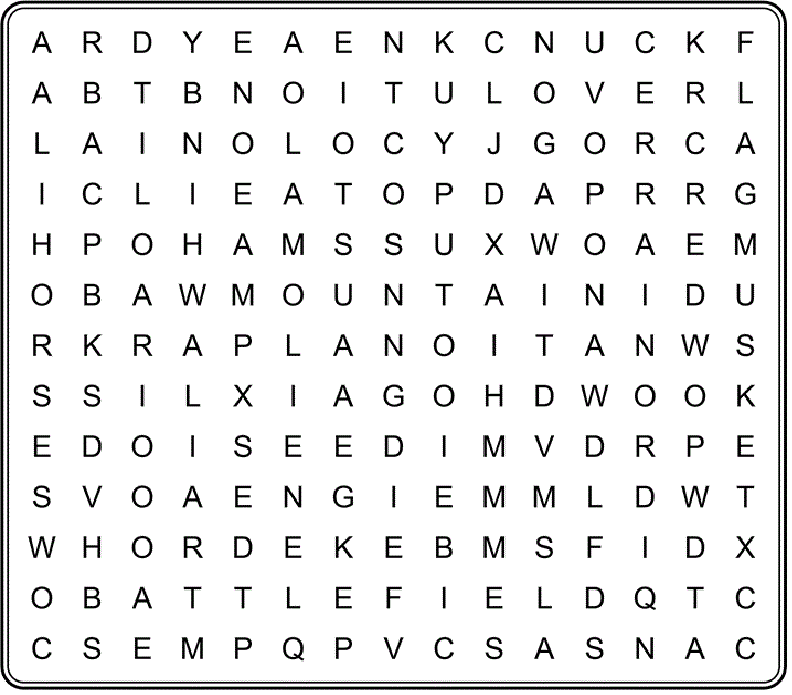
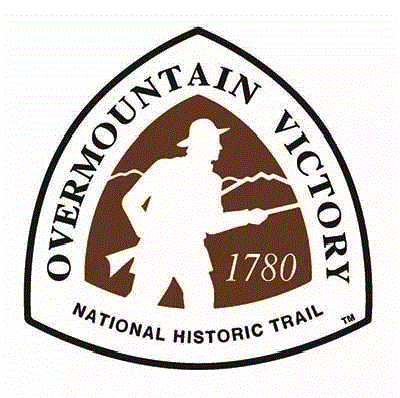
Overmountain Victory
National Historic Trail
Stretching 330 miles through four states (North and South Carolina, Tennessee, and Virginia) the Overmountain Victory National Historic Trail traces the route used by patriot militia during the pivotal Kings Mountain campaign of 1780.
Learn more!
Find us on social media or visit our website: www.nps.gov/ovvi
Southern Campaign Summary!
The Overmountain Men were militia from Georgia, North and South
Carolina, Tennessee, and Virginia.
Believing their livelihoods were threatened by British Major Patrick Ferguson, this combined force defeated him at the Battle of Kings Mountain. This patriot victory was a turning point in the Southern Campaign.
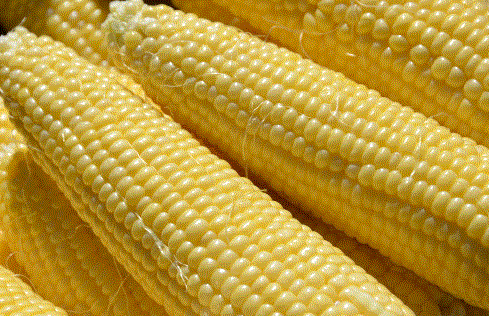
Feeding an Army on the Trail!
While the flavor of the food may not have been the best, the largest concern was the calories. Calories are how we measure the energy we get from food. When we eat more calories than we need, our body stores them as fat. When we don’t eat enough calories, the function of our body is affected and can lead to many health problems.
When preparing for a long-distance journey, it is recommended that someone who is hiking for 10 hours needs roughly 5,000 calories to fuel them. Riding a horse for that same amount of time can burn around 2,000 calories.
Using your multiplication skills, see how many calories one of these Overmountain Men needed to hike their journey from Sycamore Shoals, Tennessee to the Battle of Kings Mountain. How many calories would they need if they were riding horses?
(A hiker needs 5,000 Calories per day) X (14 days from Sycamore Shoals to Kings Mountain) = _________(H)
(A rider needs 2,000 Calories per day) X (14 days from Sycamore Shoals to Kings Mountain) = ________(R)
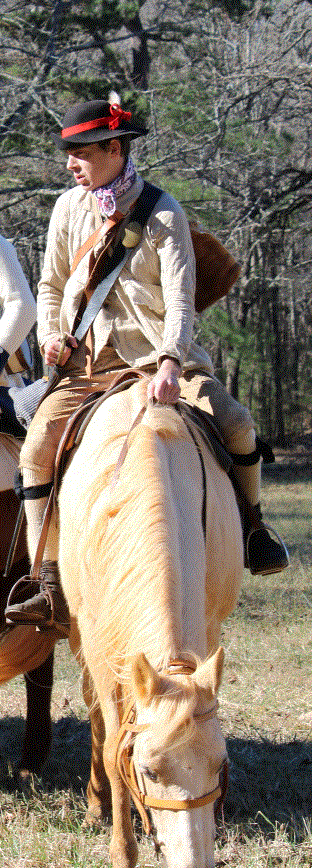
Benjamin later remembered that during their journey to the battle and home they “all came near starving to death.” The inability to find this much food caused many men to starve, making it easier for them to get sick in the cold and wet weather, causing weakness and fatigue, and mental side affects such as aggression and obsessive thinking.
Kings Mountain
National Military Park
victory against Major Ferguson’s Loyalists. Patriot militiamen from SC, NC, VA, TN, and GA managed to surprise and encircle them,
killing or capturing the entire force. It was this “turn of the tide of success” that encouraged the Patriots to keep fighting, discouraged
the Loyalists, and made Lord Cornwallis rethink his invasion of North Carolina.
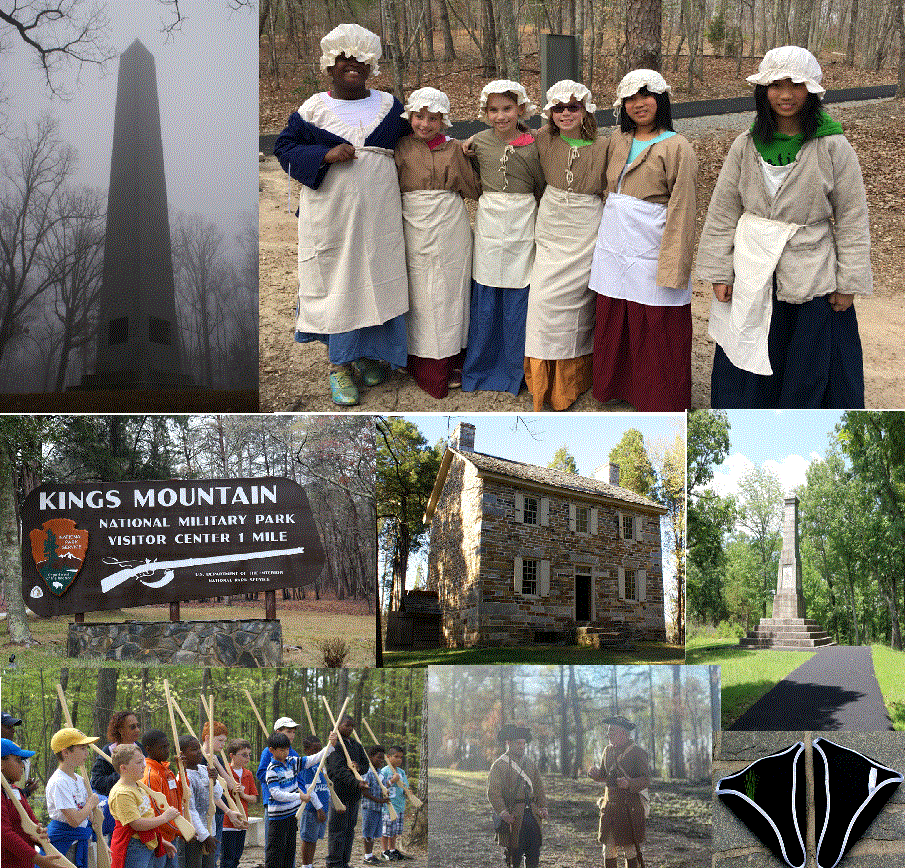

Musket Mashup
The Battle of Kings Mountain was fought entirely between Patriot and LoyalistMilitiamen armed with Smoothbore Muskets and Long rifles. How were these weapons similar? How were they different? Which one would you prefer? Fill in the blanks with the words below, and pick one!
Both weapons are______________ which means that when you pull the trigger a piece of flint hits a piece of steel making a __________, which ignites the ______________. They are also both __________ or ______________________, which means that they are loaded from the open end of the barrel.
The difference between these weapons are their_____________. A___________ barrel has grooves cut inside of it to ________ the bullet. This lets the Long Rifle shoot___________ and more ______________, but it took almost a full __________ to load and fire. The __________________ does not have rifle grooves, so it can be loaded and fired in about _______ which is ________ faster than the Long Rifle. Smoothbore Muskets can also be fitted with ______________, for hand-to-hand combat while the Long Rifle could not.
Word Bank
Long Rifle
20 Seconds
Bayonets
3x
muzzleloaders
Muskets
Spin
Smoothbore Musket
Accurately
Minute
Barrels
Flintlocks
Spark
Gunpowder
Further
Which would you choose? Why?
Cowpens National Battlefield
Southern Campaign Summary!A pasture at the time of the battle, this Revolutionary War site
commemorates the place where Daniel Morgan and his army turned the flanks of Banastre Tarleton’s British army. This classic military tactic is known as a double envelopment. As a result of the patriot victory at the Battle of Cowpens, Lord Cornwallis’ army was weakened. After failing to catch-up to Daniel Morgan, Cornwallis chased after General Nathanael Greene into North Carolina where their two armies fought at the Battle of Guilford Courthouse.
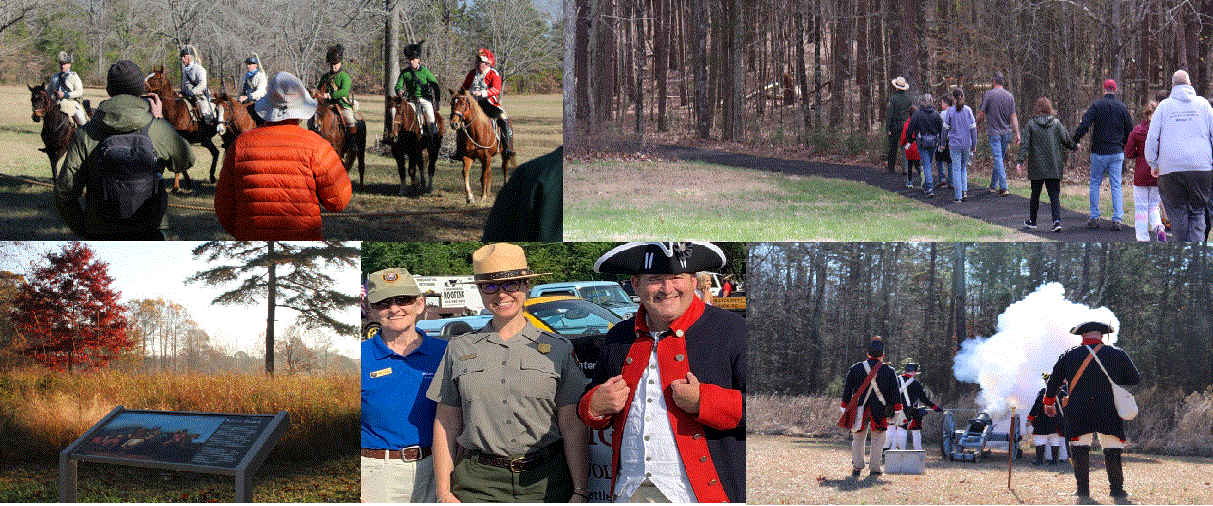
Learn about Leadership
Daniel Morgan’s leadership helped to win an important patriot victory. How much do you know about the Battle of Cowpens? Draw a line to the correct answer.| Clue | Draw a line to the correct answer | Answer |
| Soldiers on first line of patriot defense | Continental soldiers | |
| Soldiers on second line of patriot defense | Old Waggoner | |
| Soldiers on third line of patriot defense | Green River Road | |
| Daniel Morgan’s nickname | Patriots | |
| Before the battle, Daniel Morgan’s soldiers were | Militia | |
| Leader of British forces | Hours of Marching | |
| The date of the Battle of Cowpens | Banastre Tarleton | |
| Where the battle took place | Surrounded by the Patriots | |
| Road where patriot soldiers were placed | January 17, 1781 | |
| The Battle of Cowpens was a victory for the | Cow pasture | |
| The British soldiers began the battle tired after | Skirmishers | |
| At the end of the battle, the British soldiers were | Rested and fed |
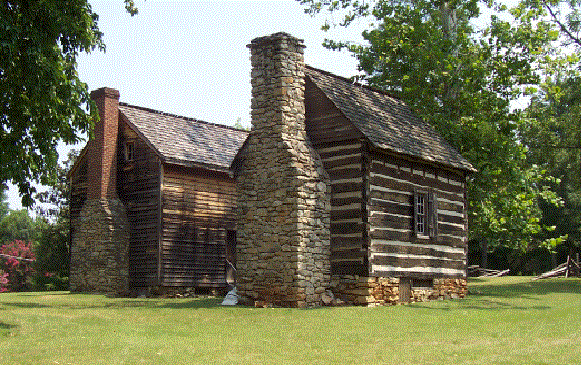
Guilford Courthouse
National Military Park
On March 15, 1781, the largest, most hotly-contested battlefield of the Revolutionary War’s Southern Campaign was fought at the small North Carolina backcountry hamlet of Guilford Courthouse.
Learn more!
Find us on social media or visit our website: www.nps.gov/guco
Discover the Signers Monument!
In 1780, Major General Nathanael Greene was hand picked by General George Washington to lead the American army in the southern colonies.
General Greene was a clever commander. Although he did not win a single battle which he commanded, Greene’s tactics weakened the British army enough that they surrendered at Yorktown 7 months after the Battle of Guilford Courthouse.
The Greene Monument was put up in 1915 by people who wanted to honor General Greene, and remember the important role he played in the American Revolution.
In 1776, each of the thirteen colonies sent representatives to Philadelphia to sign the Declaration of Independence. The men who signed the document believed America needed to be free from the British king and that America must govern itself. Because they believed this so strongly, they went to war with the British to gain their freedom.
The Signers Monument was built in 1894 to honor the people who signed the Declaration of Independence. Two of the signers from North Carolina are laid to rest under the monument.
What would a monument to someone or something important to you look like? Draw it here!
There were three signers of the Declaration of Independence from North Carolina. What were their names?
_________________________
_________________________
_________________________
Circle the names of the two signers that are buried underneath the
monument.
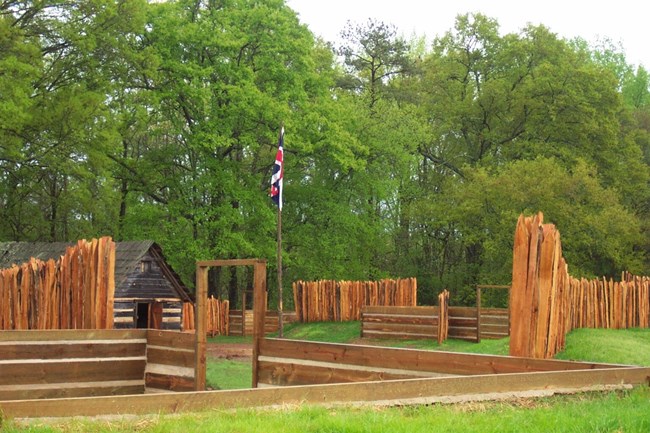
Ninety Six National Historic Site
Settlers struggled to survive in the harsh backcountry of South Carolina. Cherokee people hunted and fought to keep their land. Two towns and a trading post were formed then abandoned to the elements, and two Revolutionary Warbattles were fought here. Today, visitors can view the remaining earthworks of the original Star Fort.
Learn more!
Find us on social media or visit our website: www.nps.gov/nisi
Southern Campaign Summary!
In 1775, the first land battle of the Revolution fought in the south happened here. By 1780, the British had fortified the important frontier town. After the Battle of Guilford Courthouse, Cornwallis turned his attention to Virginia. The Continental Army under Nathanael Greene returned south to capture British forts. At Ninety Six, Greene laid siege to the loyalist defenders from
May 22 to June 18, 1781. It was the longest field-siege of the war.
Crossword!
Walk the trail or take the virtual tour to find the answers!
Down1. The red clay of the area was described as ________ _________ by Colonel Thaddeus Kosciuszko.
2. ________________ trenches were dug in a zig-zag pattern.
3. The __________ was going to be packed with gun powder to blow a hole in the fort.
6. The 30-foot ________ tower was erected in a single night and allowed men to aim into the fort.
7. General Greene learned that Lord _________ was heading to Ninety Six with 2000 troops.
9. Patriots dug earthen trenches known as ____________ to provide cover.
11. Major General Nathanael ____________ was the patriot commander at the siege of Ninety Six.
Across
4. Colonel ____________ was the lead engineer for the patriot army.
5. Brigadier General Andrew _____________ was at the 1775 battle and the 1781 siege at Ninety Six.
8. The patriot troops arrived at Ninety Six on the _________ __________ Road.
9. Colonel Kosciuszko was born in this country _________.
10. Lieutenant Colonel John Harris ___________ ordered the construction of the Star Fort.
12. The 50 men who volunteered to lead the attack on the Star Fort on June 18, 1781, were called the ________ _______.
13. Lieutenant Colonel Henry _____ joined the siege of Ninety Six after arriving from Augusta, GA.
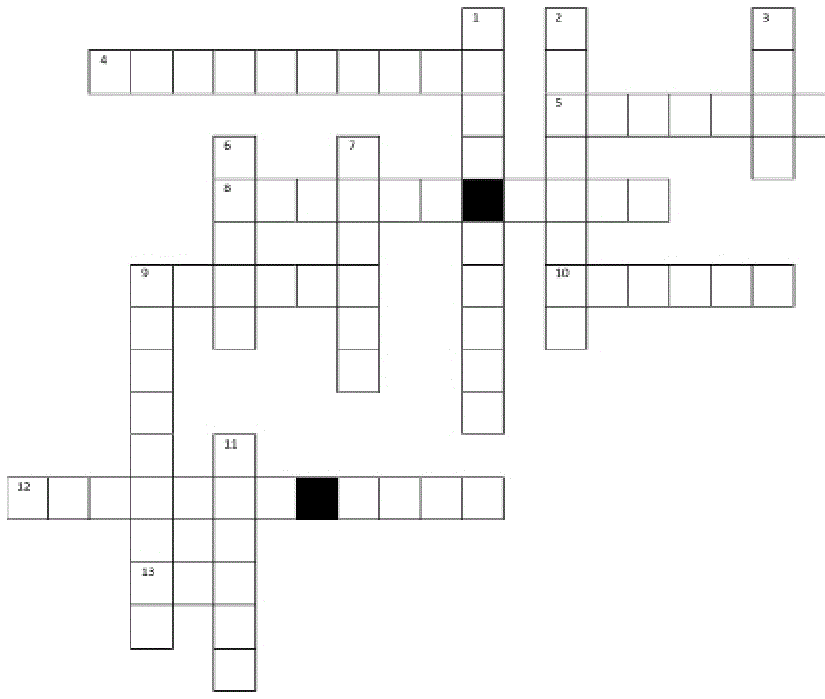

Word Scramble
Here is a fact sheet about the Southern Campaign, but there’s a problem…the most important words are scrambled! Explore the exhibits or website to unscramble the bolded words.The Battle of POCNESW ended in a rare double envelopment of British forces.
______________________________
Ninety Six National Historic Site’s HKSRWEORAT were made from red clay.
_______________ _______________
Kings Mountain National Military Park was the site of the defeat of Major Patrick NUGRFSEO.
___________________
The Continental forces were led at the Battle of Guilford Courthouse by
LTHANANAE ENRGEE.
________________ ______________
The NUOREVOMTIAN men won a much needed victory at the Battle of
Kings Mountain.
________________ ______________
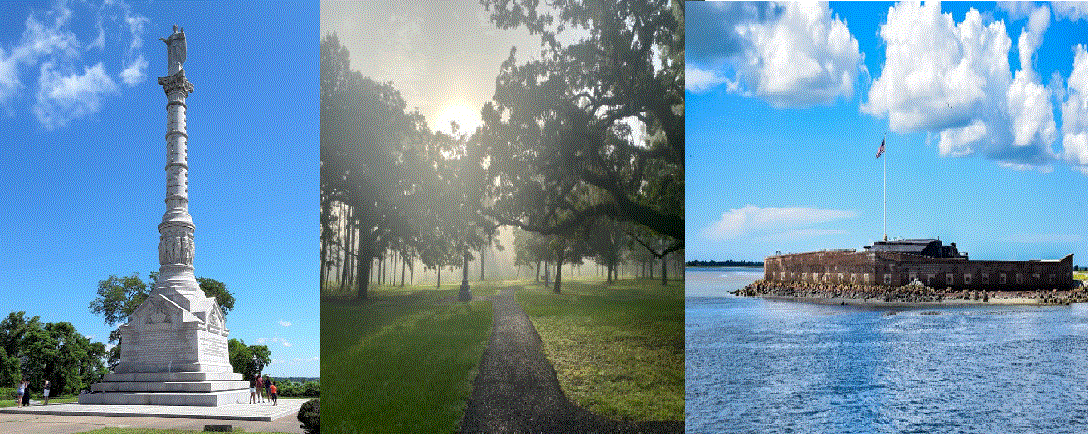
Colonial National Historical Park: www.nps.gov/colo
Moores Creek National Battlefield: www.nps.gov/mocr
Fort Sumter and Fort Moultrie National Historical Park: www.nps.gov/fosu
Congratulations!
This certifies that __________________________________________
has successfully fulfilled the requirements for becoming a Junior Ranger and takes the following pledge:
I, ____________, pledge to be a good Junior Ranger of the Southern Campaign and to teach others about the American Revolution. I will help protect the park from harm. I will help others learn about the history of the park and to appreciate the plants and animals that live here. I promise to take only pictures and leave only footprints.
Park Ranger Signature
_____________________________________

Tags
- cowpens national battlefield
- guilford courthouse national military park
- kings mountain national military park
- ninety six national historic site
- overmountain victory national historic trail
- kings mountain national military park
- ninety six national historic site
- guilford courthouse national military park
- cowpens national battlefield
- overmountain victory national historic trail
- america250
- american revolution continental army
- american revolution 250
- revolution 250
- revolutionary war
- daniel morgan
- banastre tarleton
- william washington
- john eager howard
- 1776
- 1781
- america 250
